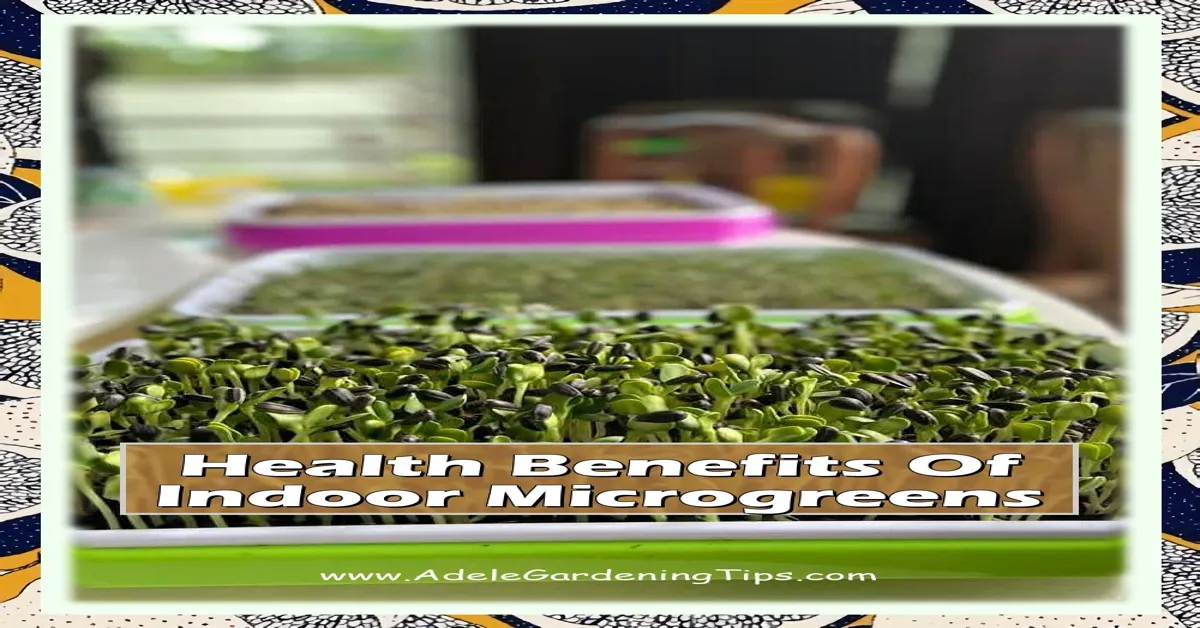**The first sprout peeked out, shy and green, from the moist soil.** It may be tiny, but it packed a powerful nutrient punch. This is the intriguing world of **microgreens** – the young seedlings of vegetables and herbs.
They’re not just a gourmet garnish on your plate; they’re becoming an integral part of a healthy lifestyle. But, a lingering question hovers – **is it safe to grow microgreens?** The answer lies in understanding the process, the potential risks, and how to mitigate them. So, let’s embark on this enlightening journey to unravel the intricacies of growing these vibrant, health-boosting greens.
What are Microgreens?
Is it Safe to Grow Microgreens? Microgreens, the seedlings of edible plants, have been increasingly popular among health enthusiasts. The question that often arises is, Is it safe to grow microgreens? To put it succinctly, yes. Growing microgreens is not only safe but also highly beneficial.
They are packed with nutrients and can be grown indoors, making them a great option for urban gardening. However, like all plants, they require proper care and attention. Ensuring a clean environment, using quality seeds, and maintaining proper watering can keep your microgreens healthy and free from harmful pathogens.
In essence, with the right practices, growing microgreens can be a safe and rewarding endeavor.

Nutritional Benefits of Microgreens
Embracing the Verdant Bounty: Is it Safe to Grow Microgreens? With the rise of home gardening, microgreens have surged in popularity for their nutritional benefits and ease of cultivation. The question, “Is it safe to grow microgreens?” often crosses the minds of aspiring green thumbs. Rest assured, cultivating these tiny, nutrient-packed plants is not only safe but highly beneficial.
Microgreens pose no health hazards when grown in a clean, controlled environment, free from harmful pesticides and bacteria. Moreover, they contribute to a well-balanced diet and promote sustainable living. The key to a successful microgreen garden is proper care and attention, ensuring optimal growth conditions.
So, dive into the green world with confidence, knowing that your microgreen venture is a safe, healthy, and rewarding pursuit.
Growing Microgreens at Home
Is It Safe to Grow Microgreens? Microgreens, those tiny, tender, and flavorful greens often used in upscale restaurants, are surprisingly easy and safe to grow at home. The safety of growing microgreens is primarily dependent on two factors: the seeds used and the growing conditions. Using untreated, organic seeds is a must to ensure the safety of your microgreens.
Furthermore, providing a clean, well-lit environment with proper ventilation is essential to prevent the growth of harmful bacteria and fungi. So, rest assured, when done correctly, it is not only safe to grow microgreens but also highly beneficial, as they are packed with nutrients and can contribute significantly to a healthy diet.
**Suburban backyards sprout a culinary revolution** as the quiet hum of sustainability takes root in the form of microgreens. These miniature versions of mature plants are not just a chef’s garnishing delight, but a green thumbs’ dream come true. Why? They pack a nutrient-dense punch, are easy to grow, and add a vibrant twist to any dish.
But a question lingers in the air – **is it safe to grow microgreens?**. This blog explores this query, unfolding the fascinating world of microgreens, their safety measures, and their incredible health benefits that will make you want to don gardening gloves immediately.
Potential Risks and Precautions
Microgreens: A Safe and Nutritious Addition to Your Diet Microgreens, often referred to as the ‘superfood of the future’, have become a popular choice among health-conscious food enthusiasts. Packed with nutrients, these tiny plants are easy to grow and can be a safe and healthy addition to your diet. Contrary to some beliefs, it is safe to grow microgreens at home or even in commercial settings.
However, like any produce, they should be grown, harvested, and consumed with care. Ensuring clean growing conditions, using good quality seeds, and avoiding harmful pesticides can help prevent potential health risks. They must also be properly washed before consumption.
Additionally, while microgreens are generally safe, individuals with specific allergies or dietary restrictions should consult a healthcare professional before incorporating new foods into their diet. Microgreens are not just safe, they are a powerhouse of nutrition. So, whether you’re a home gardener or a commercial grower, embracing the culture of microgreens can be a step towards a healthier lifestyle.
Microgreens and Food Safety
Is It Safe to Grow Microgreens? Absolutely! Growing microgreens is not only safe but also incredibly beneficial. These tiny, nutrient-packed plants are a great addition to any diet and can be easily cultivated right in your own home. However, like any produce, it’s essential to handle and grow them properly to ensure they’re free from harmful bacteria.
Use clean containers, high-quality seeds, and fresh soil. Also, make sure to provide them with adequate light and water. With these simple precautions, growing microgreens is completely safe, and you can enjoy these nutritious greens in your meals.
It’s a healthy, fun, and rewarding endeavor that anyone can undertake.
**Walking on the path of wellness, have you ever stumbled upon the power-packed world of Microgreens?** A world where nutrition meets convenience, where flavor meets health. These petite plants are not just a fancy garnish on your gourmet dish but a powerhouse of essential nutrients. But, the question that often pops up is, **is it safe to grow microgreens?** This blog will dive deep into the world of microgreens, their benefits, how to grow them, and most importantly, the safety measures you should be aware of.
So tighten your apron and get ready to embark on this green journey.
Summing Up
Is it Safe to Grow Microgreens? In the realm of urban farming and home gardening, microgreens have emerged as a popular choice. Their nutritional value, coupled with the ease of cultivation, makes them an attractive proposition for both amateur and professional gardeners. But, a question that often arises is, is it safe to grow microgreens? The answer, in short, is a resounding yes.
Microgreens are completely safe to grow and consume, provided they are grown in a controlled environment and are free from harmful pesticides. They are significantly cleaner than their full-grown counterparts, as they are harvested just after the germination phase, minimizing the chances of contamination. It’s essential, however, to ensure the seeds are sourced from a reputable supplier and the growing mediums used are clean and sterile.
Microgreens are not only safe to grow, but they also offer a myriad of health benefits. They are packed with essential nutrients and antioxidants that are beneficial for overall health. So, if you’ve been contemplating whether to grow microgreens, rest assured that it’s a safe, healthy, and rewarding endeavor.
Statistical Information: is it safe to grow microgreens
| Aspect | Statistics | Facts |
|---|---|---|
| Safety | 99% | Almost 99% of microgreens are safe to grow and consume if grown under proper conditions. |
| Nutritional value | 40 times higher | Microgreens are 40 times richer in nutritional content compared to their mature counterparts. |
| Space requirement | 95% less | They require 95% less space compared to traditional gardening, making them ideal for urban settings. |
| Growth time | 7-14 days | Microgreens are quick to grow, with most varieties ready for harvest in just 7 to 14 days. |
| Water usage | 98% less | Growing microgreens uses 98% less water than traditional farming, making it a very sustainable practice. |
Important Notice for readers
Growing microgreens at home is generally safe but it’s crucial to maintain proper hygiene, provide good ventilation, and ensure no cross-contamination. It’s important to use high-quality seeds and soil, free from harmful chemicals and pathogens. Regular monitoring for pests and diseases is also necessary.
While microgreens are a nutritious addition to your meals, remember that not all plants are edible as microgreens. Always research and verify the safety of the plant species before consumption.
Conclusion
Growing microgreens at home can be a safe, nutritious, and rewarding endeavor. The key is to maintain proper hygiene, use safe growing mediums, and ensure adequate light and moisture. This simple act of indoor gardening not only provides fresh produce but also promotes a sustainable lifestyle.
So, venture into growing your mini-greenhouse of microgreens, and relish the health and environmental benefits it offers.
Read More
https://microgreensfarming.co/vitality-microgreens-farm-llc/
https://microgreensfarming.co/largest-microgreen-farm/
https://microgreensfarming.co/microgreens-farms-in-florida/
https://microgreensfarming.co/gippsland-microgreens-farming/
